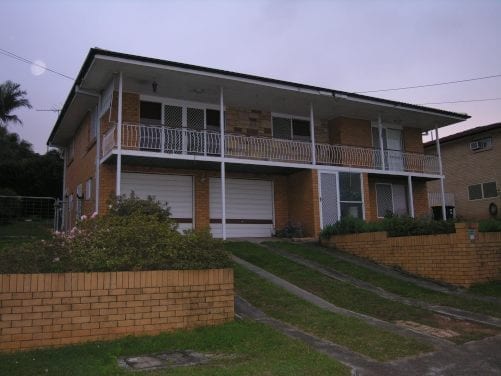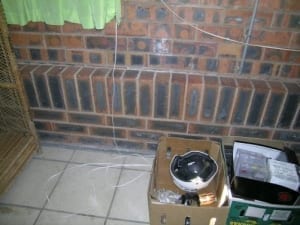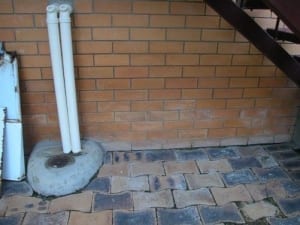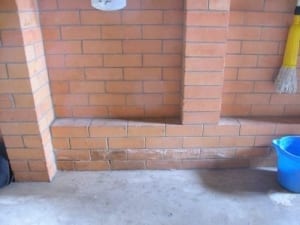Learn what the differences are between a 2 storey and high-set house.
Differences between 2 storey & high-set houses. A typical high-set house. QBIS.
The following photos show indications of seepage and rising damp to single and double brick walls (no cavity) of high-set houses.
These problems are the reasons why high-set houses are not suitable for conversion to habitable areas and the brick walls must not be covered with any type of material.
High-set vs 2 storey house differences.
A purpose built 2 storey house has been designed and constructed to stop seepage and rising damp affecting its inhabitants.
The following items are fitted during construction.
- Rebate to the slab edge.
- Vapor barrier fitted below the slab.
- Damp-course barriers, fitted just below the slab level.
- Weep-holes fitted to the lower section of the walls.
- Cavity between outer brick and inner wall.
These necessary items cannot be effectively and economically fitted after the building has been constructed.
Some examples:
You can clearly see indications of rising damp also lack of weep-holes, therefore the walls are unlikely to have damp-course barriers.
High-set vs 2 storey house. Be warned!
- Some builders claim this can be overcome with water-proof render applied to exterior of the brick walls.
- This may help stop some seepage (for the short term) but will not stop seepage and rising damp!




